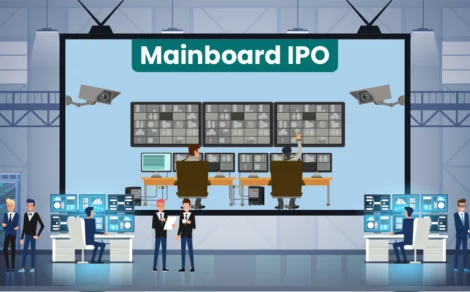If you’ve ever tried figuring out the actual cost of making something whether it’s a physical product like a water bottle or a service like custom graphic design, you quickly realize it’s not just about the obvious stuff. It’s not just the materials or labour. There’s a whole bunch of other costs that sneak in behind the scenes.
That’s where absorption costing comes in. It helps businesses wrap their heads around the total cost of producing each unit by including every relevant expense—fixed or variable, big or small.
Let’s dig deeper into how it works, why it matters, and whether it makes sense for your business.
The Accounting World Behind the Numbers
Before we go further, let’s ground this in a real-world example.
Say you own a workshop making handmade ceramic mugs. When you think about the cost of each mug, you probably think of the clay and glaze. Maybe the potter’s wages. But what about electricity to run the kiln? Or rent for your workshop space? Or the cost of maintaining your tools?
All of those things matter. And more importantly, they add up.
With absorption costing, all of those expenses get allocated into the final cost of each product you sell. Not just the obvious, physical inputs but everything it takes to keep the wheels turning.
So now, let’s dig deeper into what is absorption costing?
At its core, it’s a method of assigning all production-related costs to the products being made. This includes both variable costs (which change based on how much you produce) and fixed costs (which stay the same regardless of production levels).
That means every mug, cupcake, or widget you make carries a slice of rent, utility bills, salaries, and everything else that goes into your operations even if you don’t sell them all right away.
It’s one of the most widely used accounting methods in the world and is a favourite for large-scale production and businesses that keep inventory on hand.
The Components of Absorption Costing
Let’s break down the main components of this technique a bit further:
- Direct materials: These are the raw goods that become part of the final product. In a t-shirt business, it’s fabric and thread.
- Direct labour: The wages paid to workers directly involved in production. Not admin, not sales, just the people making stuff.
- Variable overhead: Costs that go up or down with production. Think utility bills, packaging, or materials used in different quantities.
- Fixed overhead: Costs that stay the same whether you make one product or a thousand. Like rent, insurance, and salaried management.
So, when we say absorption costing includes all these, we mean that every single product absorbs a portion of these costs. It’s a way to make sure that nothing gets left out when calculating the real cost per unit.
Why do Companies Use Absorption Costing?
The biggest reason? It gives a fuller, more accurate view of what things actually cost.
If you only looked at direct materials and labour, you’d miss a huge chunk of the financial picture. That might lead you to price products too low, underestimate expenses, or assume you’re making more money than you really are.
Here’s why this technique is often preferred for accounting:
- Regulatory compliance: It’s required by generally accepted accounting principles (GAAP) for financial reporting in many countries.
- Realistic profit measurement: Since all costs of production are considered, your profit margins are closer to reality.
- Better long-term planning: Understanding how fixed and variable costs contribute to your overall business health helps you make smarter decisions, especially around scaling or pricing.
Absorption Costing and Variable Costing: What’s the Difference?
At first glance, these two methods might seem similar. But their differences can lead to very different conclusions.
Where absorption costing spreads both fixed and variable overheads into product costs, variable costing includes only variable costs in its calculation. Fixed costs are treated as period expenses and don’t impact the cost per unit directly.
Here’s how this plays out:
- Under absorption costing, unsold inventory carries some fixed costs into the next period.
- Under variable costing, all fixed costs hit the income statement right away, regardless of how much you sold.
This small difference can lead to major changes in your bottom line, especially in months where inventory builds up. So, it’s important to know when to use each.
Benefits of Using Absorption Costing
Here’s a quick breakdown of the key advantages of this technique:
- Accurate cost tracking: Since it includes direct costs, overheads, and other fixed expenses, it paints a complete picture.
- Complies with accounting standards: As we mentioned, GAAP and similar frameworks require it for external reports.
- Inventory is valued properly: Helps in asset tracking and calculating cost of goods sold (COGS).
- Facilitates better pricing decisions: You’re less likely to underprice a product when you know its true cost.
Just keep in mind that it can slightly inflate profit in the short term, especially when inventory builds up. That’s why many managers use both absorption and variable costing side-by-side, depending on what kind of decision they’re trying to make.
When Should You Use Absorption Costing?
This method shines when:
- Your business carries inventory between periods
- You need to create reports for investors or regulators
- You’re dealing with significant fixed overhead costs
Industries like manufacturing, retail, and even food production benefit most from this method. It helps these businesses manage inventory valuations more accurately and make long-term financial decisions.
If you’re a startup or service-based business with little to no physical inventory, variable costing might suit you better in the early stages. But once you scale up, components of absorption costing will likely become essential to track where your money’s really going.
Final Thoughts
So, to sum it all up, absorption costing includes a way to ensure every item you produce carries the full weight of what it took to make it and not just the materials and labour, but the rent, utilities, and everything in between.
It might feel a bit technical at first. But once you start thinking in these terms, you begin to see your business differently. More clearly. More strategically.
And in business, clarity? That’s priceless.
Related Reads
Stock to Buy Today: November 19, 2025
The Indian stock market witnessed a mild decline on November 18, 2025, ending a...
By: torus
- 4 mins
- 19.Nov.2025
- 4.3(3)
- 9
Stocks to Buy Today: November 18, 2025
The Indian stock market closed positively on Monday, with the Sensex up over 388...
By: torus
- 5 mins
- 18.Nov.2025
- 4.3(3)
- 10
Stock to Buy Today: November 14, 2025
On Thursday, Indian Stock Market ended the session with marginal gains. The Nifty 50...
By: torus
- 4 mins
- 14.Nov.2025
- 4.3(3)
- 30
Stocks to Buy Today: November 13, 2025
The Indian stock market ended Wednesday’s session on a strong footing, with the Sensex...
By: torus
- 7 mins
- 13.Nov.2025
- 4.3(3)
- 33
Stocks to Buy Today: November 12, 2025
Despite a sluggish start, the Indian Stock Market saw benchmarks like Sensex and Nifty...
By: torus
- 5 mins
- 12.Nov.2025
- 4.3(3)
- 38
Stocks to Buy Today: November 11, 2025
The Indian stock market rebounded smartly on Monday, snapping a three-day losing streak. The...
By: torus
- 5 mins
- 11.Nov.2025
- 4.3(3)
- 52
Disclaimer: The content provided in this blog is for informational purposes only and does not constitute financial advice or recommendations. The content may be subject to change and revision. Readers are encouraged to conduct their own research and consult with a qualified financial advisor before making any investment decisions. Torus Digital and its affiliates takes no guarantees whatsoever as to its completeness, correctness or accuracy since these details may be acquired from third party and we will not be responsible for any direct or indirect losses or liabilities incurred from actions taken based on the information provided herein. For more details, please visit www.torusdigital.com.
Tenneco Clean Air IPO Listing: Strong Market Debut with 27% Premium
Tenneco Clean Air India Ltd made a confident entrance into the public markets on...
By: torus
- 5 mins
- 19.Nov.2025
-
3.7(6)
-
282
Stock to Buy Today: November 19, 2025
The Indian stock market witnessed a mild decline on November 18, 2025, ending a...
By: torus
- 4 mins
- 19.Nov.2025
-
4.3(3)
-
282
Mirae Asset Infrastructure Fund NFO: A Sector-Focused Bet on India’s Growth
Mirae Asset Mutual Fund has launched a new equity scheme — Mirae Asset Infrastructure...
By: torus
- 4 mins
- 18.Nov.2025
-
4.3(6)
-
282
Emmvee Photovoltaic IPO: Shares Make Muted Market Debut, List Flat At ₹217
Emmvee Photovoltaic Power made a muted debut on 18 November 2025, listing flat at...
By: torus
- 3 mins
- 18.Nov.2025
-
3.7(6)
-
282


